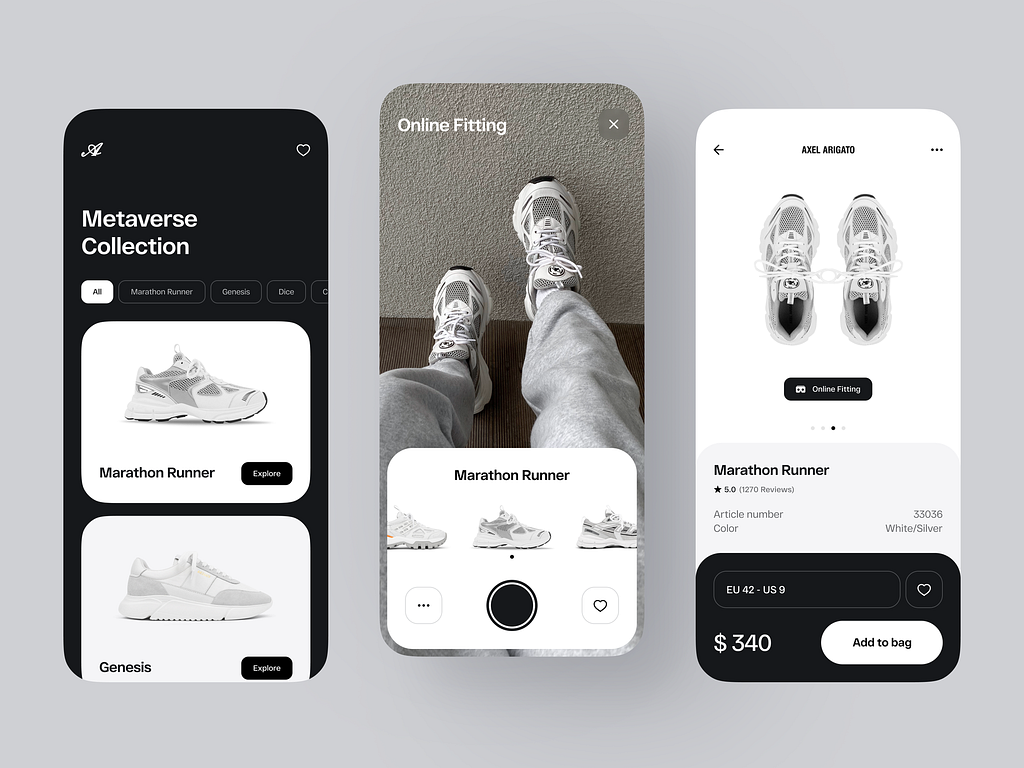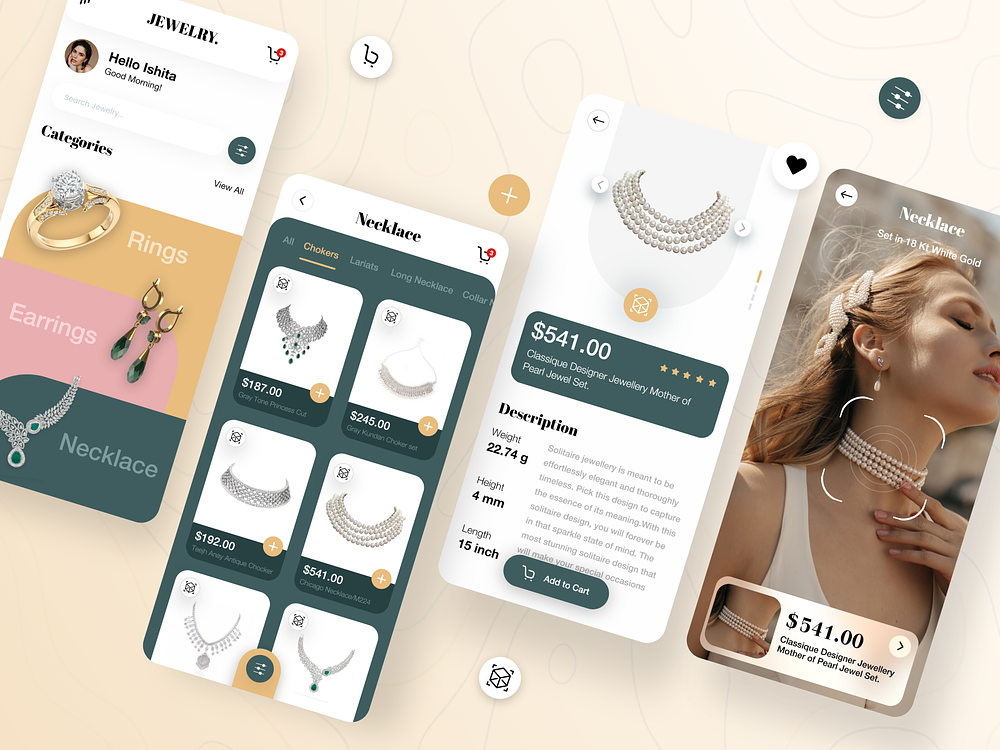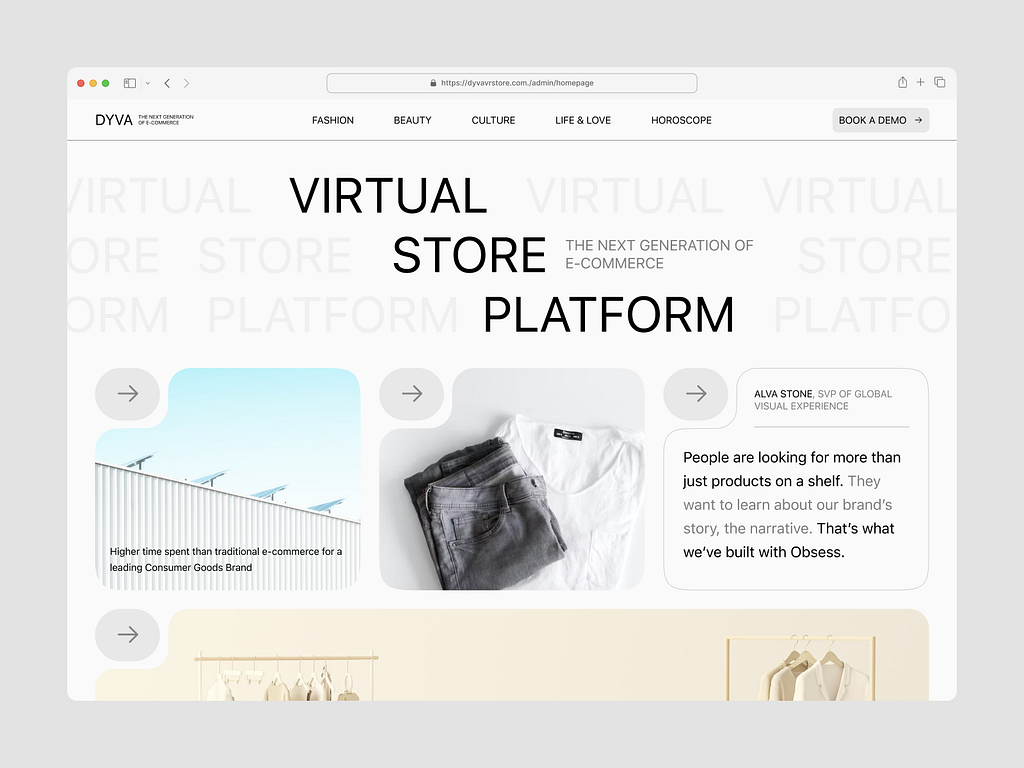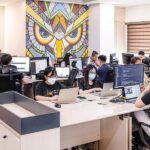Fashion Retail: Elevating Brands with 3D, AR, and Virtual Try-On Solutions
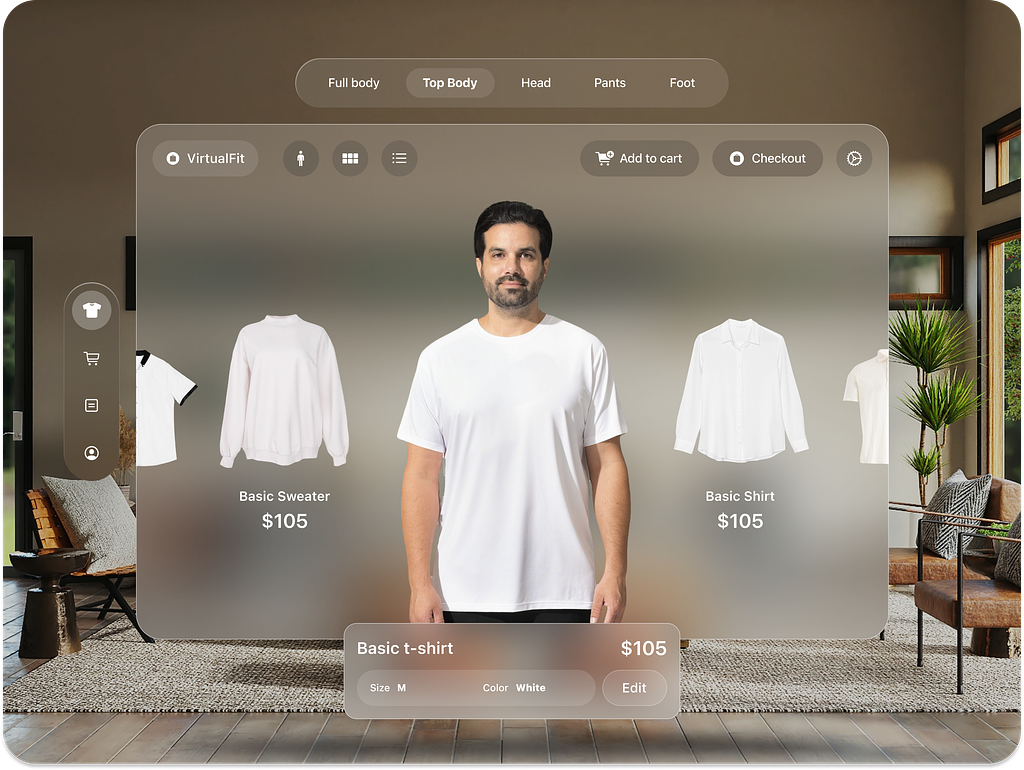
The fashion industry has always been at the forefront of adopting innovative technologies to enhance customer experience and streamline operations. In recent years, technologies such as 3D modeling, Augmented Reality (AR), and Virtual Try-On (VTO) have significantly transformed how consumers interact with fashion brands. These technologies offer immersive and personalized shopping experiences that bridge the gap between online and offline retail, driving higher engagement, conversion rates, and customer satisfaction. This comprehensive analysis explores the technological underpinnings, market implications, and future prospects of these transformative technologies, highlighting the role of software development companies like Savvycom in their implementation.
The Technological Underpinnings of 3D, AR, and Virtual Try-On Technologies
In an era where digital experiences are reshaping the retail landscape, the fashion industry stands at the forefront of technological innovation. The adoption of 3D modeling, Augmented Reality (AR), and Virtual Try-On (VTO) technologies has revolutionized the way consumers interact with products, blurring the lines between physical and virtual shopping. These advanced technologies not only offer a deeper level of engagement but also provide a more personalized and immersive experience, allowing shoppers to explore and try on items with unprecedented accuracy and ease. As we delve into the technological underpinnings of these transformative tools, we uncover the sophisticated processes and cutting-edge advancements that are redefining fashion retail and setting new standards for consumer experiences.
3D Modeling: Creating Realistic Digital Representations
3D modeling involves creating a three-dimensional digital representation of an object, which can be viewed and manipulated in a virtual environment. This technology has revolutionized the fashion industry by enabling brands to showcase their products in a more detailed and lifelike manner. The process of 3D modeling typically involves two main techniques: photogrammetry and 3D scanning.
-
Photogrammetry: This technique involves capturing multiple photographs of a physical object from different angles and using software to stitch these images together into a 3D model. Photogrammetry is particularly useful for creating detailed textures and accurate representations of complex surfaces, such as fabric patterns and jewelry.
-
3D Scanning: This method uses laser or structured light to capture the geometry of an object. 3D scanning can produce highly accurate models with precise measurements, making it ideal for items like footwear and accessories, where fit and size are critical.
The use of 3D modeling in fashion retail allows consumers to interact with products in a virtual space, offering a realistic view of the product from all angles. This capability is especially valuable for online shopping, where consumers cannot physically interact with the products.
Have a Project Idea in Mind?
Get in touch with Savvycom’s experts for a free consultation. We’ll help you decide on next steps, explain how the development process is organized, and provide you with a free project estimate.
Augmented Reality (AR): Enhancing the Real World with Digital Elements
Augmented Reality (AR) technology superimposes digital elements onto the real world, enhancing the user’s perception of their environment. In fashion retail, AR is used to provide consumers with interactive and immersive shopping experiences. AR applications can be accessed through various devices, including smartphones, tablets, and AR glasses.
-
Simultaneous Localization and Mapping (SLAM): SLAM technology is critical for accurate AR experiences. It allows devices to understand their environment and create a map of their surroundings while tracking their location. SLAM is essential for placing digital elements accurately in the real world, ensuring that AR experiences are stable and realistic.
-
Computer Vision Algorithms: These algorithms enable AR systems to detect and interpret features in the real world, such as facial features for virtual try-ons or surfaces for placing virtual objects. Advanced computer vision techniques, such as deep learning, have significantly improved the accuracy and reliability of AR systems.
AR technology enhances the shopping experience by allowing consumers to visualize products in their own environment. For example, AR can enable consumers to see how a piece of furniture would look in their living room or how a dress would fit on their body. This interactive experience helps consumers make more informed purchasing decisions.
Virtual Try-On (VTO): Personalizing the Shopping Experience
Virtual Try-On (VTO) technology leverages 3D modeling and AR to allow consumers to virtually try on products, such as clothing, accessories, and makeup. VTO applications use computer vision and machine learning algorithms to detect and track the user’s body or facial features, overlaying digital representations of products in real-time.
-
Facial and Body Tracking: Advanced facial and body tracking technologies enable VTO systems to accurately map digital products onto the user’s body. For example, VTO for makeup can detect facial features, such as eyes and lips, to apply virtual cosmetics. Similarly, VTO for clothing can track the user’s body shape and size to provide a realistic fit.
-
Personalization: VTO technology can be integrated with AI systems to offer personalized product recommendations based on the user’s preferences and behavior. For example, a VTO app can suggest clothing styles that match the user’s body type or recommend complementary accessories.
VTO technology offers a highly personalized and engaging shopping experience, reducing the uncertainty associated with online shopping. It also helps to minimize the rate of returns, as consumers can better understand how products will look and fit before purchasing.
Market Implications and Strategic Advantages
The integration of 3D, AR, and VTO technologies in fashion retail offers several strategic advantages, including enhanced customer engagement, increased conversion rates, and operational efficiencies. These technologies also provide valuable data and insights that can inform business strategies and drive innovation.
Enhanced Customer Engagement and Satisfaction
One of the most significant benefits of 3D, AR, and VTO technologies is their ability to create engaging and immersive shopping experiences. These technologies enable consumers to interact with products in new and exciting ways, making the shopping process more enjoyable and memorable.
For example, luxury brands like Gucci and Burberry have integrated AR and VTO features into their mobile apps, allowing consumers to virtually try on products and explore their collections in a virtual environment. This level of interactivity not only enhances the customer experience but also fosters a deeper connection with the brand.
Get in touch with Savvycom for a free consultation. We’ll help you decide on next steps, explain how the development process is organized, and provide you with a free project estimate.
Increased Conversion Rates and Reduced Returns
The ability to visualize products in a realistic and interactive manner significantly influences consumer purchasing decisions. According to a report by Shopify, products with 3D and AR experiences have a 94% higher conversion rate than those without these features. This is because consumers are more likely to purchase products when they can see how they look and fit in real life.
Moreover, VTO technology helps reduce the rate of returns, a common challenge in online fashion retail. By providing a realistic preview of products, VTO minimizes the discrepancy between consumer expectations and the actual product, leading to fewer returns and exchanges.
Operational Efficiencies and Cost Savings
3D, AR, and VTO technologies also offer significant operational efficiencies and cost savings. For instance, 3D modeling can streamline the product design and development process, reducing the need for physical prototypes and samples. This not only accelerates the time-to-market but also lowers production costs.
In addition, these technologies provide valuable data and insights that can inform inventory management and marketing strategies. For example, analyzing consumer interactions with VTO features can reveal popular products and styles, enabling brands to optimize their inventory and marketing campaigns.
Data-Driven Insights and Personalization
The data generated by 3D, AR, and VTO technologies can provide valuable insights into consumer preferences and behavior. Brands can analyze this data to understand which products are most popular, which styles resonate with different demographics, and how consumers interact with their digital offerings.
This data can also be used to personalize the shopping experience further. For example, AI algorithms can recommend products based on a consumer’s previous interactions with VTO features or suggest complementary items that match their style preferences. This level of personalization enhances the customer experience and increases the likelihood of conversion and loyalty.
Future Prospects and Trends
The future of fashion retail is poised for further transformation as 3D, AR, and VTO technologies continue to evolve and become more accessible. Several key trends and developments are expected to shape the industry’s future, offering new opportunities for brands to innovate and differentiate themselves.
Advancements in AR Hardware and Software
As AR hardware, such as AR glasses and headsets, becomes more advanced and affordable, the adoption of AR in fashion retail is expected to increase. These devices offer a more immersive and hands-free AR experience, allowing consumers to interact with digital content more naturally. Additionally, advancements in AR software, including improved tracking and rendering capabilities, will enhance the realism and interactivity of AR experiences.
Looking For a Trusted Tech Partner?
We’ll help you decide on next steps, explain how the development process is organized, and provide you with a free project estimate.
The Rise of Virtual Fashion and Digital Avatars
Virtual fashion and digital avatars are emerging as exciting new frontiers in the fashion industry. Virtual fashion involves creating digital clothing and accessories that can be worn by digital avatars in virtual environments, such as video games or social media. This trend is gaining traction as brands explore new ways to engage with consumers and tap into the growing demand for digital content.
Digital avatars, which are virtual representations of users, are becoming increasingly popular on social media and in virtual worlds. Brands can create virtual fashion items that consumers can purchase and use to dress their avatars, offering a new revenue stream and marketing opportunity.
Sustainability and Ethical Considerations
Sustainability is becoming a key consideration for consumers and brands in the fashion industry. The production of physical fashion items often involves significant environmental and ethical challenges, such as waste, pollution, and labor issues. Virtual fashion and digital products offer a more sustainable alternative, as they do not require physical materials or production processes.
Brands are increasingly leveraging 3D and AR technologies to showcase their sustainability efforts and transparent supply chains. For example, brands can use 3D modeling to create virtual fashion shows, reducing the environmental impact of physical events. AR can also be used to provide consumers with information about a product’s origin, materials, and environmental impact.
Integration with AI and Machine Learning
The integration of AI and machine learning with 3D, AR, and VTO technologies will continue to enhance the capabilities and personalization of these technologies. AI algorithms can analyze vast amounts of data to provide more accurate and relevant recommendations, improving the shopping experience for consumers. Machine learning can also improve the accuracy and realism of 3D models and AR experiences, making them more immersive and engaging.
FAQ: Understanding the Role and Impact of 3D, AR, and Virtual Try-On Technologies in Fashion Retail
How does Augmented Reality (AR) enhance the shopping experience?
AR enhances the shopping experience by overlaying digital elements onto the real world, allowing consumers to visualize products in their own environment. For example, AR can enable consumers to see how a piece of clothing would look on them or how a piece of furniture would fit in their home. This interactive experience helps consumers make more confident purchasing decisions.
What are Virtual Try-On (VTO) technologies, and how do they work?
VTO technologies use computer vision and machine learning algorithms to detect and track a user's body or facial features, overlaying digital representations of products in real-time. This allows consumers to virtually try on clothing, accessories, or makeup, providing a realistic preview of how the products will look and fit.
How can 3D, AR, and VTO technologies reduce return rates in fashion retail?
By providing realistic and accurate representations of products, these technologies help consumers better understand what they are purchasing, reducing the likelihood of returns due to dissatisfaction or mismatches between expectations and the actual product. This leads to fewer returns and exchanges, saving time and resources for both consumers and retailers.
What are the future trends in 3D, AR, and VTO technologies in fashion retail?
Future trends include advancements in AR hardware and software, the rise of virtual fashion and digital avatars, and increased focus on sustainability. Additionally, the integration of AI and machine learning will continue to enhance the capabilities of these technologies, offering more personalized and immersive shopping experiences.
How can fashion brands integrate these technologies into their digital strategies?
Fashion brands can integrate 3D, AR, and VTO technologies into their digital strategies by partnering with experienced software development companies like Savvycom. These companies can provide the technical expertise and support needed to develop and implement cutting-edge digital solutions that enhance the shopping experience and drive business growth.
What are the ethical considerations associated with virtual fashion and digital avatars?
While virtual fashion and digital avatars offer a more sustainable alternative to physical fashion, there are still ethical considerations to be mindful of. These include issues related to digital ownership, copyright, and the potential for digital exclusion. Brands should ensure that their digital offerings are inclusive, accessible, and respectful of intellectual property rights.
Conclusion
The integration of 3D, AR, and Virtual Try-On technologies in the fashion retail industry represents a significant shift in how consumers interact with brands and products. These technologies offer a range of benefits, including enhanced customer engagement, increased conversion rates, and operational efficiencies. As these technologies continue to evolve, they will play an increasingly important role in shaping the future of fashion retail.
For businesses looking to stay ahead in this rapidly evolving landscape, partnering with a software development company like Savvycom can provide the expertise and support needed to develop and implement innovative digital solutions. By embracing these technologies, brands can differentiate themselves in a competitive market, create unique and memorable shopping experiences, and position themselves for long-term success.
Tech Consulting, End-to-End Product Development, Cloud & DevOps Service! Since 2009, Savvycom has been harnessing digital technologies for the benefit of businesses, mid and large enterprises, and startups across the variety of industries. We can help you to build high-quality software solutions and products as well as deliver a wide range of related professional services.
Savvycom is right where you need. Contact us now for further consultation:
- Phone: +84 24 3202 9222
- Hotline: +1 408 663 8600 (US); +612 8006 1349 (AUS); +84 32 675 2886 (VN)
- Email: [email protected]
